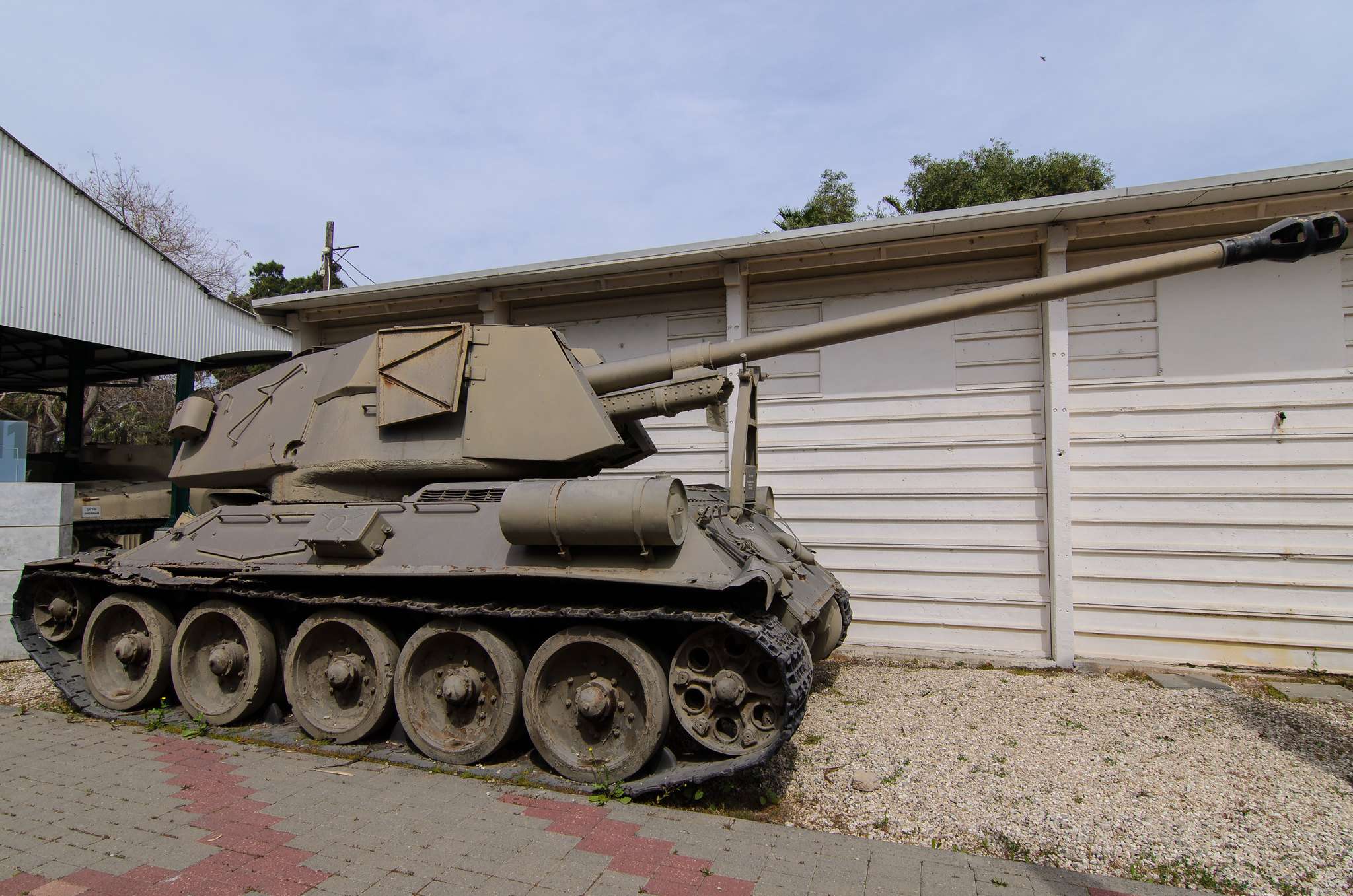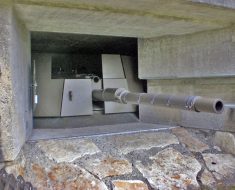With an estimated 80,000 produced, it should come as no surprise that there were numerous variants of the T-34 built over the years since the Second World War. However, one of the least known variants of the T-34 is an Egyptian modification developed in 1960 called the T-34/100, sometimes referred to just as the T-100.
The Egyptian T-34/100 variant should not be confused with a short-lived Soviet modification, dubbed the T-34-100. That particular T-34-100 was a Soviet effort during the latter stages of the Second World War to add a 100 mm gun to a T-34-85 turret and prototype T-44 turret.
This type was cancelled as the war was coming to a close, and newer vehicles could fulfil the role better.

Further, the Egyptian T-34/100 should also not be mistaken for the Czech T-34/100, a 1950s development project to place a 100mm gun in an enlarged turret on Czech T-34-85s. Like the Soviet T-34-100, the Czech T-34/100 never entered production.
Egypt’s tank was extensively modified, with its turret completely rebuilt to accept a massive 100 mm gun of Second World War origin. In the end though the tank saw little service, aside from some clashes with Israel.
Contents
Background
With an many T-34-85s supplied to Egypt in the post-Second World War period, it would only be natural for the Egyptian army to create modifications for the tank to prolong its service life and make it more effective for modern combat of that era.
Around 1960, Egypt decided to develop a home-grown modification of converting some of its T-34-85s into tank destroyers by arming them with a more powerful 100 mm gun; thus the Egyptian T-34/100 would be born.
The T-34/100
As the T-34/100 was a T-34-85 with a new gun, the T-34/100 kept many of the same design features, engine and performance characteristics of the T-34-85. The T-34/100 also maintained a four-person crew of commander, gunner, loader and driver.
The main difference was in the armament and turret design.

The Egyptian T-34/100 would have the original T-34-85 turret heavily modified in order to install the Second World War-era Soviet BS-3 100mm field gun. The rear, and upper sides and front armor of the original turret were removed and extended armour plates would be welded in their place to increase the turret space to accommodate the breech of the large BS-3 gun.
The front and top of the turret were also welded with steel plate extensions, forming an enclosed turret.
Read More M51 “Super Sherman” Tank
As the BS-3 was larger than the original 85mm gun of the T-34-85, the barrel of the BS-3 protruded far forward of the T-34/100. This can be a real problem in a tank’s design, as there is a higher risk of the barrel sticking into the ground on uneven terrain. It can also offset the tank’s center of gravity.

A barrel lock was installed at the rear of the hull to lock the barrel and turret in place over the rear deck when the vehicle was in transport.
Due to the extensive turret modifications to accommodate the BS-3, the coaxial machine-gun had to be removed from the turret and there was no roof mounted anti-aircraft machine-gun. However, the 7.62mm bow-gun remained.

Although there does not appear to be any indications as to exactly why the BS-3 field gun was selected for the T-34/100 instead of a more dedicated, up-to-date anti-tank weapon, it is logical to assume that the BS-3 was selected as it was still capable in the role, and easy to source.
Read More Namer – The Most Heavily Armored IFV in the World
In the late 1950s, the BS-3 was in the process of being replaced by the 100mm T-12 anti-tank gun in the armies of the Soviet Union.
So, it was likely that the Egyptians in the late 1950s and early 1960s now had surplus BS-3s that could still be employed in a tank destroyer role, especially if attached to a mobile platform like the T-34.
BS-3 Gun
The BS-3 was developed from the B-34 universal naval gun, which were first fitted to Soviet ships in the early 1940s.
The BS-3 arrived fairly late in the war in 1944, and was only built in small numbers before the conflict ended. As a result, it had very little impact, if anything, on the war’s outcome. However should it have been needed, the BS-3 had some excellent anti-armor performance, able to penetrate around 160 mm of steel at 500 meters.

It could be used in the anti-tank role or for indirect fire as a field gun, the latter being its most common use during the Second World War. The great power and shell velocity of the BS-3 had a negative effect of the gun jumping a considerable amount when firing, and blowing up a large dust cloud around the muzzle.
In later years the BS-3 was also capable of firing the 9M117 Bastion laser-guided missile, which could penetrate around 550 mm of steel.

This weapon offered a significant boost in firepower of the T-34-85’s 85 mm gun, and allowed it to strike harder at longer ranges. On the other hand, the BS-3 was significantly heavier and 1.3 meters (4 ft 3 in) longer.
Service
The T-34/100 was developed after the 1956 Arab-Israeli War, so it did not take part in that conflict. Although the T-34/100 was designed prior to the 1967 Six Day War, and regular T-34-85s were active during that war, it does not appear that the T-34/100 was involved in that conflict.
The only conflict that the T-34/100 was reported to have been involved in was the Yom Kippur War of 1973.

Although its upgraded firepower could destroy Israeli tanks, the armour of the T-34 could not withstand the modern anti-armour weapons and tank guns of that era. Therefore, the T-34/100 would be employed in a defensive role during the war and rely upon ambush tactics.
Read More IS-3 – The Soviet Heavy that Scared the West
While there are no indicators of its performance in the Yom Kippur War, the T-34/100 would be retired shortly after the conflict was over; perhaps suggesting that despite the increased firepower, the T-34/100 was simply too outdated for modern warfare.






